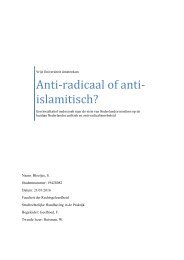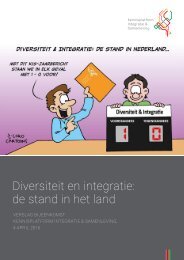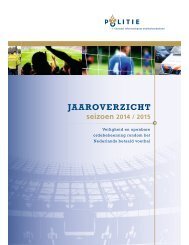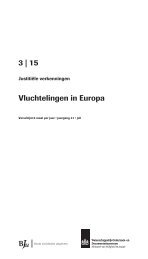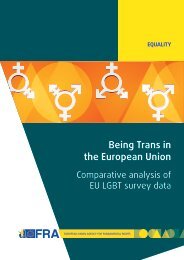Tilburg University Chineseness as a Moving Target Li Jinling
Li_Chineseness_12_09_2016
Li_Chineseness_12_09_2016
You also want an ePaper? Increase the reach of your titles
YUMPU automatically turns print PDFs into web optimized ePapers that Google loves.
6 <strong>Chineseness</strong> <strong>as</strong> a <strong>Moving</strong> <strong>Target</strong><br />
are consequently transforming from multicultural societies with a limited number of<br />
ethnic groups (‘cultures’) to a superdiverse society in which cultural, religious and<br />
linguistic identities cannot be taken for granted anymore. A superdiverse society is a<br />
society in which ethnicity, culture, language and religion have ‘no guarantees’ (Harris &<br />
Rampton, 2009) and are incre<strong>as</strong>ingly fluid and difficult to determine and define in<br />
terms of groups of people (cf. Brubaker, 2002).<br />
The concept of superdiversity intends to ‘capture a level and kind of complexity<br />
surp<strong>as</strong>sing anything many migrant-receiving countries have previously experienced’<br />
(Vertovec, 2010:87). As current relations between ethnicity, citizenship, residence,<br />
origin, language, profession, etc. are of an unprecedented high complexity and low<br />
predictability, it becomes incre<strong>as</strong>ingly evident that it is descriptively inadequate to<br />
<strong>as</strong>sume fixed relations between such categories of identity or to <strong>as</strong>sume the<br />
countability or representability of cultures, languages and identities (in plural) or to see<br />
migrants (‘ethnic minorities’) <strong>as</strong> bearers of national, ethnic or religious cultures. With<br />
respect to language, observations of superdiversification have led to abandon notions<br />
of languages <strong>as</strong> bounded entities and putative things in the physical world, in favor of<br />
an understanding of language <strong>as</strong> a political construction or historical invention (see<br />
e.g., Blackledge & Creese, 2010b; Makoni & Pennycook, 2007; Shohamy, 2006; Stroud,<br />
2003) and towards adopting an alternative sociolinguistic vocabulary with notions such<br />
<strong>as</strong> crossing, transidiomatic practices, (trans)languaging, resources, repertoires,<br />
regimes, etc. to describe and understand the communicative practices and experiences<br />
of persons in particular places and situations (Blommaert, 2010; Creese & Blackledge,<br />
2010; Jacquemet, 2005; Jørgensen, 2008; Jørgensen, Karrebæk, Madsen & Møler, 2016;<br />
Rampton, 2005 [1995]).<br />
1.3 Polycentric language and identity repertoires<br />
Polycentricity is the key notion deployed in this study, which is also used in various<br />
disciplines of the humanities and social sciences, including geography, political<br />
sciences and sociolinguistics (Aligica & Boettke, 2009; Aligica & Tarko, 2012;<br />
Blommaert, Collins & Slembrouck, 2005a; Davoudi, 2002; Fuller, 1978; Hague & Kirk,<br />
2003; Polanyi, 1951). It refers to the multiplicity of centers of gravity (or centering<br />
forces) in social or spatial configurations. Where<strong>as</strong> monocentric configurations are<br />
regulated according to a single reference point in space (and/or time), polycentric<br />
configurations are regulated by multiple, competing centers with unequal power.<br />
Aligica and Tarko (2012) argue that the polycentricity conceptual framework is a strong<br />
analytical structure for the study of complex social phenomena.<br />
Sociolinguistically, whether languages (in their nominal, countable form) are seen<br />
<strong>as</strong> species of idiolects with family resemblance (Mufwene, 2008), <strong>as</strong> artefacts created<br />
by linguists (Blommaert, 2008) or <strong>as</strong> historical constructs that emerged <strong>as</strong> by-products<br />
of nation-building projects (Makoni & Pennycook, 2007), they may be recognized to<br />
have a center and a periphery. The center of a language is where speakers themselves<br />
recognize that the language is ‘best’, ‘most correctly’ or ‘most normally’ spoken and<br />
often corresponds to the most populated middle cl<strong>as</strong>s are<strong>as</strong> and to where the best or<br />
the highest number of educational institutions and publishers are or were established




